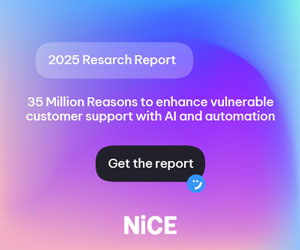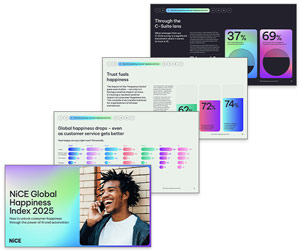We asked our readers to send in their top tips for workforce management (WFM).
1. Explain the Role of WFM to Agents
Be approachable, be human. I am bringing WFM to a company that never heard of it until 8 months ago.
I am working hard to remove the “Wicked Witch of Workforce” by scheduling one-on-one sessions with the agents and explaining my role and its purpose.
Showing them that I am willing to work with them and not just rule from behind the curtain has made a huge difference in gaining buy-in!
Contributed by: Stephanie, a Call Centre Helper Reader
2. Make a Note of Unforeseen Activity and What You Did About It
Make a note of any event or unforeseen activity that impacted your scheduling – and what you did about it – as you go through your current year.
Make a note of any event or unforeseen activity that impacted your scheduling – and what you did about it – as you go through your current year.
So, when you come to plan going forward, you can refer back to what happened the same time last year and consider whether that event might recur.
Contributed by: Nick, a Call Centre Helper Reader
3. Report Each Interaction Separately in Each Interval
We aim for First Contact Resolution with synchronous contacts, but this often isn’t realistic with asynchronous contacts where further information is often needed to clarify the customer needs and best resolution.
By reporting each interaction separately in each interval, you get a truer view of when work is landing to forecast your demand profile.
Contributed by: Andy, a Call Centre Helper Reader
4. Factor Chat Concurrency Into Your Staffing Calculations
Make sure you factor chat concurrency into your staffing calculations and forecasting when scheduling agents, as individual performance can make a big difference here.
Contributed by: Bob, a Call Centre Helper Reader
For advice on working out staffing levels, read our article: How to Work Out How Many Staff You Need in a Contact Centre
5. Make Sure to Highlight When Actual Service Level Is Exceeding Forecast
When presenting back an intraday view of service, make sure to highlight when actual Service Level is exceeding forecast Service Level at this time, especially when actual Service Level is still below target.
It can be too easy to focus on not hitting a target when we never planned to at this interval (e.g. a massive demand spike for a very short interval you would never staff to, with planned recovery throughout the day).
Contributed by: Joe, a Call Centre Helper Reader
Looking to calculate service level? Then read our article: How to Calculate Contact Centre Service Level
6. Stop Planning for Synchronous and Asynchronous Contacts in the Same Way
Problems arise when work items are assumed to be synchronous, as they are very different to asynchronous, as outlined below:
Synchronous
The conversation, dialogue, or messaging between the requestor and the employee is continual and contiguous.
Although there may be pauses or breaks in the flow of the conversation, the requestor and the employee are fully engaged and not easily distracted by other work objects.
Asynchronous
The conversation, dialogue, or messaging between the requestor and the employee is intermittent, sporadic, and discontinuous.
There are frequent pauses or breaks in the flow of the conversation. The requestor and/or the employee are not fully engaged and are easily distracted by other work objects.
WFM using ‘Answered & Active True to Interval (TTI)’ is a better way to manage asynchronous interactions, as a contact is counted once in the interval in which it is initially answered.
If the contact spans intervals, it is counted again in each subsequent interval where activity occurred. Handle Time is also reported in each interval in which work activity occurs.

This results in accurate interval-specific forecast of staffing requirements, drives schedule optimization to align schedules with the lifecycle of contacts, resolves false staffing requirements when AHT is greater than the planning interval, improves forecasting arrival patterns, and resolves !DIV/0 errors for low- to medium-volume queues where work is performed but no contacts are answered.
Contributed by: Andrea Matsuda, NICE, Ltd
7. Nurture an Innovative and Experimental Culture

An innovative and experimental culture needs to be aligned with the expectation of ops, planning and management.
A need to reconcile technical skills with business intuition will create a training requirement in the planning population.
Your WFM is only as good as the way you configure and use it.
Contributed by: Vosy Gordon, Director, ModusRP
8. Identify Opportunities for Flexibility
If you’re looking to reduce schedule inflexibility, assess current scheduling practices and identify opportunities for flexibilities.
Communication is key! Involve your agents and offer scheduling alternatives where possible.
Contributed by: Rashda, a Call Centre Helper Reader
9. Send Real-Time Notifications to Agents
To better manage real-time operations, nudges or notifications of their upcoming events can be automatically sent to agents by the WFM tool.
Also send notifications by WFM tool on deviation or extension of any events to agents, team managers and real-time analysts.
Contributed by: Prashant, a Call Centre Helper Reader
10. Switch Inefficient Agents to Voice Instead of Chat
If agents are only able to handle one chat concurrently, they would be more efficient staffing a voice channel where there is normally a quicker customer response.
This will allow agents that can handle multiple chats concurrently to be prioritized to make better use of idle time between chats.
Contributed by: Andy, a Call Centre Helper Reader
For tips on handling concurrent chats, read our article: How to Handle Multiple Chat Conversations Effectively
11. Find the Questions Leadership Might Ask
Use the data to find your questions that leadership might ask and address them in your presentation/reasoning for impacts.
The data doesn’t tell the story, it only tells you what questions to ask.
The data doesn’t tell the story, it only tells you what questions to ask.
Contributed by: Dale, a Call Centre Helper Reader
12. Don’t Just Share the Numbers… Show the Impacts!
Tell a story with your analytics.
Don’t just share the numbers – show the impacts.
Contributed by: Deborah, a Call Centre Helper Reader
For more great information on contact centre workforce management, read these articles next:
- What Is Workforce Management (WFM)?
- The Top Workforce Management WFM Solutions for 2023
- Workforce Management vs Workforce Optimization – What’s the Difference?
Author: Megan Jones
Reviewed by: Jonty Pearce
Published On: 2nd Jan 2024 - Last modified: 6th Sep 2024
Read more about - Hints and Tips, Andrea Matsuda, NiCE, Top Story, Vatsana Gordon, Workforce Management (WFM)



















